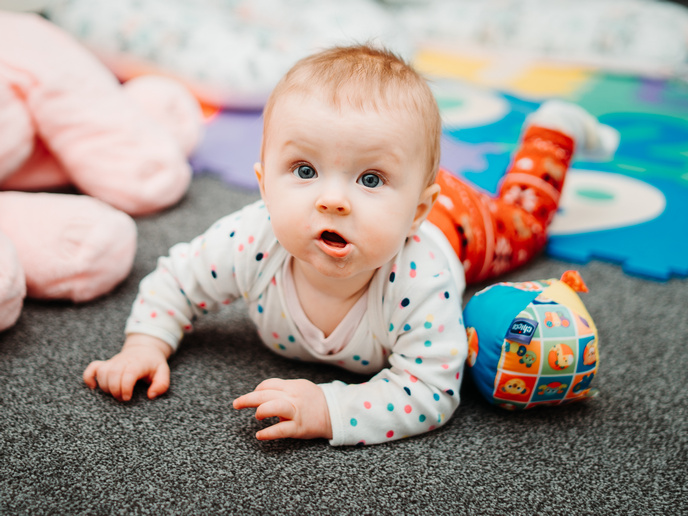Exploring babies’ preferences for faces or objects
Does a 5-month-old baby prefer to look at faces, or does it mainly focus on non-social objects such as cars and cups? According to a recent study by EU-funded scientists, this preference is mainly determined by genetic factors. Supported by the BRAINVIEW, SAPIENS, EU-AIMS and AIMS-2-TRIALS projects, the research suggests that genes play a big role in determining infants’ visual preferences and the things they learn most about. The findings were published in the journal ‘Nature Human Behaviour’. Babies gain experiences that help shape their social brain circuits and social cognition by looking at and interacting with other people. At the same time, they also face the enormous task of learning about non-social objects and events. Whether a baby looks at faces or non-social objects at any moment in time can reflect their interests, understanding and motivation, and how developed their cognitive system is. The researchers analysed these preferences in 536 five-month-old same-sex twins. “Our results suggest that even before infants can influence and choose their environment by pointing, crawling or walking, they create their own unique perceptual experiences by systematically looking more at social or non-social objects, preferences that can be largely explained by genetic differences between children,” reports study first author Dr Ana Maria Portugal of BRAINVIEW, SAPIENS and AIMS-2-TRIALS Swedish project partner Uppsala University in a ‘EurekAlert!’ news release. This early in the infant’s life, preference for social or non-social information could not be explained by family environment. The team also found that infants who look more at faces rather than non-social objects at 5 months of age tend to have a larger vocabulary in the second year of life. Differences in what infants look at can also affect how their parents interact with them. However, as Dr Portugal reportedly emphasises in the news release, looking at many non-social objects is not necessarily negative since it also contributes to cognitive development.
Exploring the link with autism
Do visual preferences predict whether infants will later exhibit behaviours associated with autism, such as difficulty with social communication? Are there gender differences in a preference for faces? “Our results indicate that face preference in infants is not strongly associated with social communication ability later in childhood. We also found no difference between boys and girls in terms of preference for faces versus non-social objects,” observes study senior author Prof. Terje Falck-Ytter, also of Uppsala University. “Moreover, our data showed that the genes which influence facial preference are not the same as those involved in eye contact – that is, whether infants looked primarily at the eyes or the mouth when looking at a face. It’s fascinating that two basic social behaviours like looking at faces and looking at eyes have different genetic and probably evolutionary bases.” The BRAINVIEW (Integrated view on disruptions of early brain development) and SAPIENS (Shaping the social brain through early interactions) projects have ended. EU-AIMS (European Autism Interventions - A Multicentre Study for Developing New Medications), which has also closed, and the ongoing AIMS-2-TRIALS (Autism Innovative Medicine Studies – 2 – Trials) project have received support from the Innovative Medicines Initiative, a partnership between the European Union and the European pharmaceutical industry. For more information, please see: BRAINVIEW project SAPIENS project EU-AIMS project AIMS-2-TRIALS project website
Keywords
BRAINVIEW, SAPIENS, EU-AIMS, AIMS-2-TRIALS, infant, face, non-social object, baby



